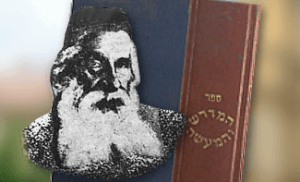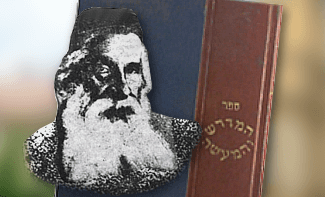
Perform my mishpatim/laws and safeguard my chukim/decrees to follow them…You shall safeguard my chukim and my mishpatim.[2]
People have long puzzled over the fact that the Torah includes both mishpatim and chukim –laws that are rationally appealing with those that make little or no sense to us. It is clear, however, that they are linked to each other. While modern “rationalists” often champion the former to the exclusion of the latter, the behavior of people speaks for itself. Those who throw off the yoke of the chukim do not generally become paragons of virtue in regard to the mishpatim. Often, it is quite to the contrary. People who reject one reject the other.
Here is an example from tzedakah, one of the most rationally appealing of all mitzvos. Centuries ago, well before the spirit of “enlightenment” took hold of the countries in which we live, the Rambam could write,[3] “We have never seen nor heard – neither in Spain nor in the western countries – of a Jewish community without a communal charity fund.”
This has changed, however, as Jewish society recently prides itself on having become more enlightened and rational. What the Rambam did not see can be found today, where tzedakah organizations are often missing, but theaters, dinners and dances have become the methods of choice for raising charitable funds. The Torah’s words[4] “Aser taaser” have taken on new meaning. From their original intention of “You shall surely tithe,” they have come to mean, “Take ten percent of the ten percent” you have earmarked for charity, and give it to the poor. The other 90% will go for the expenses of lavish dinners. While the gemara states that the real value of a fast day is the giving of tzedakah, today charity is given from in front of a plate heaped high with food.
In the pesukim that launched this piece, we are accustomed to thinking of the verbs asiyah and shemirah as applying, respectively, to affirmative obligations and to proscriptions. In other words, asiyah belongs with mitzvos aseh, and shemirah with lo saaseh. The verbs, however, also convey a different dichotomy: actual performance of mitzvos versus measures meant to safeguard us from violating those mitzvos – what we call fences around the law.
We are also tempted to link asiyah with mishpatim. Because we have no rational basis to reject them, we believe that it suffices for the Torah to simply command us to perform them. Nothing more is needed, we reason. Chukim, however, are fraught. Our rational selves resist them; they have no innate appeal. Therefore, we argue, the Torah uses the word shemirah in relation to them, telling us that we had better prop up their observance with the force of special provisions and laws. Indeed, this is what we find in the first of the two pesukim above.
With the passage of time, however, we have learned that the boundaries between chok and mishpat are fluid. We have witnessed in the world of nature many things that were entirely inexplicable suddenly laid bare before us, and learned of exquisite purpose and design. Similarly, Torah commandments that previous generations could not understand have taken on new meaning as later chachamim conveyed to us new ways of understanding them.
The opposite is also true. Measures that once seemed logically compelling have been challenged in the course of time. What we once thought was obvious, we now practice simply because the Torah demands it of us, without telling ourselves or others that we understand why.
Chukim, in other words, have turned into mishpatim, and mishpatim have morphed into chukim. The two verses with which we began allude to this. “Perform my mishpatim and safeguard my chukim.” The Torah begins with the expected. Mishpatim should be performed; chukim require the extra reinforcement of shemirah. But that changes, as if the Torah predicts that in the course of time, the two might switch positions. Therefore it follows up with “You shall safeguard my chukim and my mishpatim,” requiring shemirah/safeguarding of both of them.
Alas, besides new understandings of chukim, we have witnessed the growth of new misunderstanding as well, mostly by two groups. One, view, popularized by the free-thinkers in our midst, treats chukim dismissively. According to them, the chukim are have a place in the lives of the ignorant masses, but should be ignored by enlightened people.
Another view is the counterpoint to the first – but just as wrong. This group unequivocally accepts the validity of chukim. It looks upon them – quite accurately – as edicts of the King, which His subjects have no right to question. Those who share this view, however, make one additional assumption that is really does not follow. Since chukim are edicts of the King, to be followed simply out of raw obedience, we have no right to try to understand them at all. Searching for their deeper message and meaning is pointless, they argue.
The way of the Torah, as in so many other instances, is the midpoint between extremes. We should endeavor as much as possible to grasp what we can from the chukim. But we must remember that no reasoning that we discover will ever be sufficient to dislodge our responsibility to faithfully uphold all their requirements.
- Based on HaMedrash V’HaMaaseh, Acharei Mos (3), by R. Yechezkel Libshitz zt”l ↑
- Vayikra 18:4-5 ↑
- Mishneh Torah, Matnos Aniyim 9:3 ↑
- Devarim 14:22 ↑
hukim, we have witnessed the growth of new misunderstanding as well, mostly by two groups. One, view, popularized by the free-thinkers in our midst, treats chukim dismissively. According to them, the chukim are have a place in the lives of the ignorant masses, but should be ignored by enlightened people.
Another view is the counterpoint to the first – but just as wrong. This group unequivocally accepts the validity of chukim. It looks upon them – quite accurately – as edicts of the King, which His subjects have no right to question. Those who share this view, however, make one additional assumption that is really does not follow. Since chukim are edicts of the King, to be followed simply out of raw obedience, we have no right to try to understand them at all. Searching for their deeper message and meaning is pointless, they argue.
The way of the Torah, as in so many other instances, is the midpoint between extremes. We should endeavor as much as possible to grasp what we can from the chukim. But we must remember that no reasoning that we discover will ever be sufficient to dislodge our responsibility to faithfully uphold all their requirements.


